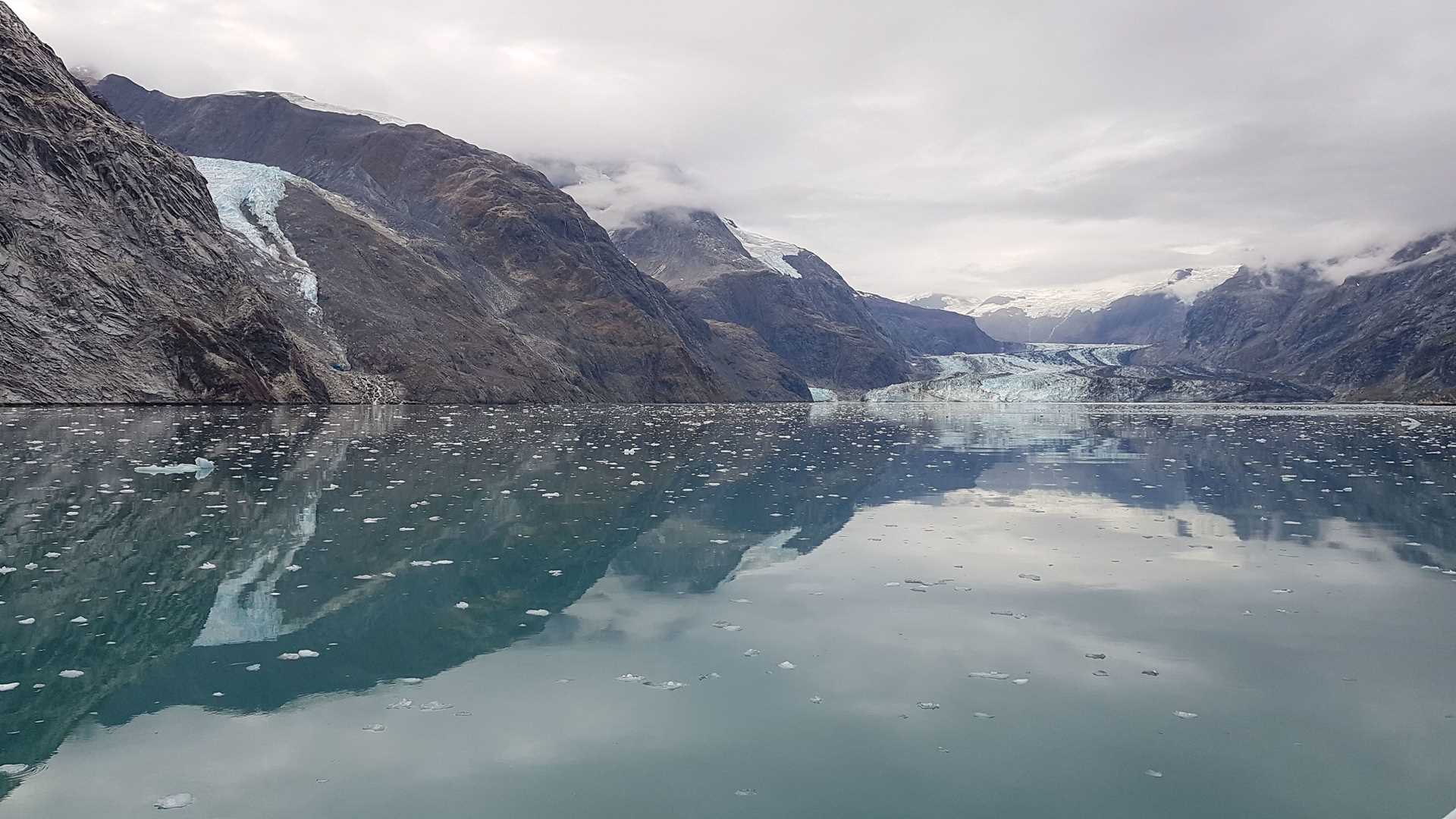Much like Cinderella, our journey started at the stroke of midnight this morning as National Geographic Sea Lion crossed the boundary waters into Glacier Bay National Park. Our National Park Service Ranger and Tlingit Cultural Specialist had joined us on board the previous evening, giving us the flexibility to travel full steam ahead for over 60 miles up to the head of Glacier Bay.
Rain fell lightly from
thick gray skies and the sound of “white thunder,” or glacial calving, met us upon
waking in the morning at the base of sky-blue Margerie Glacier. The Grand
Pacific Glacier—the master builder of the entire channel of Glacier Bay—loomed nearby.
We photographed and admired Margerie through the mist before descending back
into the welcome warmth of the ship for breakfast.
National Geographic Sea Lion
then made its way into the nearby Johns Hopkins Inlet, where icebergs dotted
the mirrored waters like poppies in a field. Snow-fed waterfalls streamed down
steep mountainsides on either side of the fjord, while at its head the clouds
broke enough to allow sunlight to illuminate the majestic face of Johns Hopkins
Glacier. As the rain had let up briefly, we took advantage of the nicest
weather of the day to pay our respects to this primordial landscape and enjoy
cups of hot chocolate and apple cider on the bow. It seemed all too soon before
the ship began to turn around and head south back towards the entrance to the
park.
Yet our day’s
adventures were far from over. Harbor seals, Steller sea lions, and sea otters
popped up occasionally to gaze at our ship (what must they think of the strange,
humming metal creatures that frequent their waters in the summer, then migrate
south in the wintertime?). Our most phenomenal wildlife viewing of the day, and
possibly of the trip, took place not long after our departure from the inlet,
as we entered a small channel known as Russell Cut. Thanks to the sharp eyes of
our expedition leader, we spotted not just one but three wolves wandering the
shoreline! Wolves have a tendency to vanish almost as soon as they’re spotted,
but this small pack rested on the rocks and gave us an unprecedented viewing
opportunity from a distance. On a personal note, this was my first time seeing
wolves in the wild as well as that of several people I spoke to that afternoon,
making for a truly unforgettable experience.
The gray skies enveloped us in a sheet of rain as we left Russell Cut and wandered the shorelines looking—albeit unsuccessfully—for mountain goats and bears, but our spirits couldn’t be dampened following the sightings of that morning. We made our final stop at South Marble Island and watched tufted puffins, cormorants, and a variety of gulls swoop and soar above the limestone cliffs, while in the background bachelor Steller sea lions grunted and roared with amplified sounds of indigestion. Amidst the cacophony, I reflected on our small but critical role in this wild, 3.3-million-acre wilderness of wolves, eagles, sea dwellers, and might rivers of ice. We are but visitors, and yet our impact is arguably the strongest being felt by this park and its residents since the retreat of the Grand Pacific Glacier. Ensuring a future in which our children and their children also have the opportunity to experience what we’ve seen today lies in the hands of everyone descending onto the ship one final time as she departed South Marble Island and sailed quietly back out of the bay.







